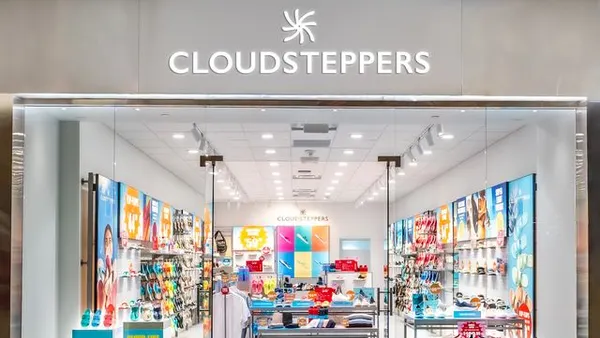Dive Brief:
-
Digital commerce — a combination of site traffic and shopper spending — grew by 14% during the second quarter. Shopper spending, which registered 8% growth during the quarter, is now outpacing site traffic increases, which came in at 6%, according to the latest Salesforce Shopping Index.
-
The study also showed that mobile commerce accounted for 57% of all digital commerce during the second quarter, a figure that translated to a 4% increase over the first quarter and 23% growth year of year.
-
Buying Intent also continues to tick up and is about to breach its all-time high (even including peak holiday shopping levels). Overall, nearly 20% of visitors are either buying or showing clear signs of buying behavior, like searching, adding products to a cart and starting checkouts, according to the index.
Dive Insight:
Retail Dive has followed The Salesforce Shopping Index every quarter for several quarters, in part because its breadth is hard to beat. The index purports to analyze the shopping activities of 500 million shoppers worldwide, so when this study spots a clear trend, it's definitely worth noting.
The latest edition analyzing Q2 activity noted some important trends: Shopper spending increases are out-stripping site traffic growth and is very significant because many retail e-commerce strategies are still aimed simply at getting consumers to visit. However, the trend of the last two quarters suggests they need to rethink that approach on features that actually influence spending.
"For years, digital commerce marketing has been all about traffic," Rick Kenney, head of consumer insights at Salesforce Commerce Cloud, told Retail Dive. "Build it, and they will come, or get them to the site, and they will buy. Now, with shoppers spending more when they buy, retailers need to invest more on conversion, and tools that optimize their conversion rates."
That means investing more in product discovery, site search and personalization features. "The reality is that no one navigates web sites any more," he said. "They search for what they want, or they expect to find it through recommendations." Site search also increasingly means not just typing queries into a search bar, but also enabling voice search.
Site search accounts for 10% of site visits and as much as 23% of all revenue for e-commerce sites, Kenney said. Both numbers continue to increase and the ever-growing number of sites and product catalogs means that retailers must continue to improve site search capabilities, eventually adopting technologies like artificial intelligence and machine learning to help ease the burden and increase the effectiveness of search.
Meanwhile, mobile continues to dominate. But perhaps even more intriguing than mobile accounting for 57% of digital commerce is the report's estimate that 59% of shoppers use mobile in-store. "There is no end in sight for the migration of shopping from online to mobile phones," Kenney said. "But the broader fact is that mobile is becoming a retail pillar regardless of where the shopper is."













